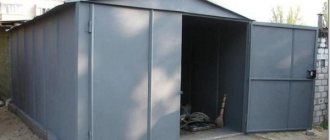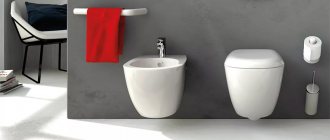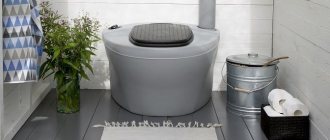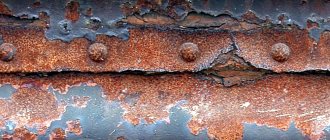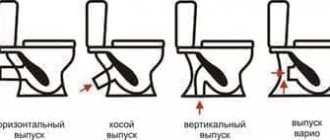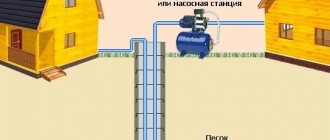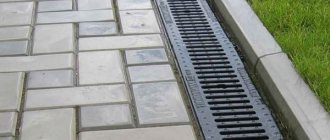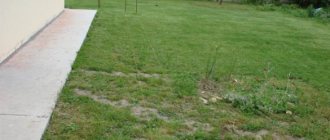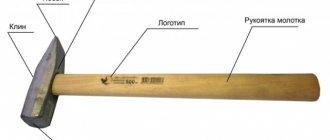Passing the degreasing quality test
It is necessary to apply a few drops of boiled water to the treated surface. This is the most accessible and fastest way to check degreasing.
This is especially true for metal coatings. If cleaning is done poorly, a drop of water will take a spherical shape and freeze in one place. With ideal cleaning, the drop will spread over the entire surface and become flat. Water should flow smoothly from a vertical covering, leaving behind a trace. This will mean that the surface is ready for gluing. This test is not entirely suitable for plastic coverings. It may be clean, but a drop will not moisten it.
How can I replace degreaser at home?
Degreaser substitutes should not be used for too long: home remedies dry out the nail plates. Due to the regular use of alcohol or chemical substitutes, nails become dull, flake and quickly break.
Nail polish remover
Standard nail polish remover
For convenience, the liquid should be applied to a cotton pad. Nail polish remover quickly cleans the nails of the fatty film, but negatively affects the condition of the nail plates. It is highly recommended to use a liquid without acetone.
It is not necessary to treat initially dry nails. How to determine the condition of the nails? To do this, it is enough to apply a high-quality varnish on them without a base or top coat. If the coating lasts a long time, this will directly indicate dryness of the nail plates.
Boric acid
Boric acid which can be found in any pharmacy
Boric acid is used in everyday life to kill germs and insects. The product has a pronounced antibacterial effect. Boric acid can fight nail fungus. The only negative: unpleasant smell. Acid should not come into contact with the skin, as it has a drying effect.
Alcohol
Medical ethyl alcohol
An affordable and effective degreaser substitute. Alcohol removes fatty film and various microscopic contaminants. To treat marigolds, you can use not only pure alcohol, but also any strong alcoholic drink.
What else is used instead of degreaser? Citric acid (has a beneficial effect on the plates due to vitamin C), a solution of water with antibacterial soap (preferably without fragrances).
Degrease for gluing
Do you know how to properly apply putty to a car?
Let's immediately look at the best way to degrease bases that will stick together in the future:
- Organic solvent
- Water detergent
- Alkaline preparation
- Special alkaline compounds
How to degrease the surface before gluing?
We have already found out what materials are suitable for metal, but for polymers or rubber we should use trichlorethylene, tetrachlorethylene or isopropyl alcohol. However, an important condition for the use of such products is the resistance of the processed product to dissolution under the influence of these solutions. If you want to use an organic solvent, then remember some rules for its use:
If you already understand how to degrease a surface, then let’s look at how to prepare surfaces yourself:
- The first step is to remove paint, rust or scale - a metal brush or sharpening machine will help here.
- Sandblasting may often be required - the process involves using water with the addition of particles of quartz sand, which are sprayed onto the surface to be treated under high pressure. By the way, this is the method used to paint cars.
- When the processing is completed, all elements are washed under running water and after complete drying, degreasing and subsequent gluing begin
In general, there is nothing complicated about degreasing yourself, and if you are going to glue or paint various materials yourself, then treating and preparing the surface before subsequent finishing will not be difficult at all.
Any surface must be degreased before painting or carrying out other repair work. Degreasing refers to the process of removing any contaminants - dust, glue, grease, emulsions, old paint residues, and ordinary dirt. Methods and means for degreasing a surface are varied, most of them are easy to use at home.
Review of popular degreasers
For a good manicure, you don’t have to buy a lot of bottles. Often, nail technicians, to save money, use universal or multifunctional liquids that combine several products. Available in packaging with different amounts of liquid in bottles.
Severina. The Severina degreaser has a relatively low cost, while combining the standard functions of a degreaser and a classic cleaner. Eliminates excess moisture from the surface layers of the nail.
Orly. The 3 in 1 Gel FX Cleanser combines three necessary products that need to be used to treat the nail before and during a manicure: a degreaser, a dehydrating dehydrator, and a dispersion-removing clinser.
Canni . A harmonious tandem of degreaser and dehydrator in one bottle. Professionally prepares the nail plate for any nail modeling system.
My Nail. Prep Nail combines two professional products – a dehydrator and a degreaser. Recommended for use before gel extensions or gel polish coating.
Kodi . Cody's Nail fresher product thoroughly degreases, removes excess moisture, disinfects, and acts as an acid-free primer. Suitable for use before coating with any material.
You probably don't know:
- How to use acrylic powder to strengthen nails?
- Acrylic on your own nails
- Nail correction with gel at home for beginners step by step
White Spirit
How to choose the right anti-freeze fluid for your car
One of these organic solvents is white spirit, familiar to everyone. It is used at the initial stage of body processing. Then, at finer stages, a mixture of alcohol is used. This solution will thoroughly wash away traces of grease from the metal surface. But there are other preparations that can be used to degrease the surface of a car. One such product is trichlorethylene. This is the most famous representative of the group. It enters into an active reaction upon contact with aluminum bodies. In this case, during the reaction, flammable substances are released, which increase the risk of fire in accidents. It is highly undesirable to use it.
If trichlorethylene reacts with water, then a sticky mass will form on the body, which is not so easy to remove. If there is no other option than to degrease the surface of the car, then this drug will do. But it only works if there is no moisture on the coating.
Materials and tools
To prepare the car body for subsequent painting, as well as to apply paintwork, you will need the following set of tools and materials:
- degreaser;
- putty composition with hardener;
- White Spirit;
- priming;
- dye;
- paint thinner;
- varnish;
- masking tape;
- protective film;
- abrasives (sanding paper of varying degrees of grit and orbital sander);
- blow gun;
- cotton rags;
- Screwdriver Set;
- non-metallic and metal spatulas;
- powerful light source;
- spray guns for primer and paint;
- protective mask (or better yet, a respirator), rubber gloves and goggles.
In addition to the tools listed above, stock up on a fire extinguisher, just in case. If you do everything right, you won't need it, of course. But its presence in some situations can save lives.
Degreasing technology
How to choose the right anti-freeze
Before starting work, you need to take care of safety precautions. Be sure to wear protective rubber gloves, a respirator and goggles. Special clothing will also be useful. The room in which degreasing will take place must be well ventilated. Avoid carrying out this type of work near an open fire, as all liquids used are highly flammable, which can lead to a fire.
Main stages:
- Degreasing is mandatory before priming and painting. It is not necessary to do this before puttying.
- There should be no humidity, drafts, or dust in the room.
- Apply the solution only with lint-free rags or napkins soaked in liquid.
- After treatment, wipe the surface with a dry cloth.
- Do not touch the treated surface with your hands.
We figured out what is the best way to degrease the surface of a car. Let's summarize some results
The importance of the car degreasing process is obvious. If you skip this step, the painting process will fail in 90% of cases.
Xylene - solvent for car enamels
When carrying out degreasing work, safety regulations must be strictly followed.
Before you start work, you must carefully select the right tool, taking into account the material from which the workpiece is made. If the fluid is selected incorrectly, there is a high probability of damage to the parts being painted.
When the surface is degreased, do not touch it with your hands or clothing. If this does happen, degrease the area again. By using the right preparations and completing the work without disrupting the technological process, you can count on a good result.
Preparing to paint a car with your own hands is a procedure that consists of several stages, and each of them is important in its own way. Proper filling, proper priming of the car and degreasing of the metal before painting are important. A lot has been written about the correct selection of putty and primer, but the quality of the paint layer will also depend on how to degrease the metal before painting, so it is worth considering this issue in more detail.
Preparing to paint a car yourself
How can you degrease the surface of a car?
White Spirit
Car owners who have never cleaned and prepared the surface of vehicle parts for painting on their own may confuse the required white spirit with substances such as kerosene and diesel fuel due to the similarity of odors. The difference between these compositions is relatively small, both of them are a mixture of special liquid hydrocarbons, both of them are produced by distilling different petroleum fractions. Many experts describe white spirit as a lighter type of kerosene.
These substances ideally degrease the surface from such contaminants as:
- Fat;
- Mastic;
- Bitumen;
- Rubber.
There is one significant difference between alcohol and kerosene. This is because kerosene is much more difficult to wash off with ordinary water after degreasing. As for alcohol, which is lighter in consistency, it, as a rule, evaporates on its own and does not harm the paint at all.
Modern professional washing stations often use kerosene, since there is high-quality professional equipment with which you can easily and simply remove residual substances and odors. If painting is carried out in a regular garage, when deciding how to degrease the metal, it is better to use alcohol or special degreasers that are alcohol-based.
if possible, it is worth purchasing alcohol that has undergone special hydrotreating, which is very important regarding products from Russian manufacturers.
Compositions for painting wood
Painting wooden surfaces can be done with several types of finishing materials. Each option differs in the composition and appearance of the resulting coating.
Paints
Wood paints are consistently popular. They allow you to renew the surface, but hide the natural texture. If the technology is followed, the result is a coating that is distinguished by individuality and a magnificent decorative effect.
The following compositions can be used in the work:
Oily. This variety is currently used quite rarely. This is due to the many negative qualities that the mixture has. Among them, the sharp and toxic odor, as well as the long drying time, stand out. The composition is used for painting wooden bases and household products.
The advantages of oil paint include good adhesion and high covering power.
Alkyd enamels. This option, like the previous one, has become less popular, but demand remains at a good level. This is because the mixture is excellent for outdoor woodwork. After application, a thin film is formed on the surface, thanks to which it is possible to emphasize the texture of the base. In addition, enamel has low vapor permeability, which reduces the risk of wood deformation when exposed to moisture. They are not durable.
Alkyd compounds are best used for outdoor use as they have a toxic odor
Water-emulsion (water-dispersed):
- Acrylic. The basis of such solutions is water and acrylic resins; they also contain additional modifiers. Due to this, the mixture turns out to be completely environmentally friendly. The scope of application is wide: it can be internal and external surfaces and even furniture. Possessing elasticity, the material prevents the appearance of cracks and damage to the wood.
Acrylic water-based coating is an environmentally friendly, fireproof type of coating with good adhesion. Latex. Hides surface cracks up to 1 mm wide, a good option for protecting the coating from the harmful effects of moisture. Compared to acrylic paints, latex paints are more moisture resistantThus, to the question: is it possible to paint wood with water-based paint, the answer will be in the affirmative. These products are considered the most preferable. It not only has excellent characteristics, but is also well tinted, which allows you to realize your design imagination.
When deciding what to paint a tree with, be sure to take into account that paint is not the only option; varnish is an excellent alternative. It is a composition based on natural or synthetic resins. Various substances that determine the properties of the material can be used as a solvent. The resulting film can be transparent or change (emphasize) the texture of the wood.
Colored varnishes allow you to imitate various types of wood
Several composition options are suitable for work:
- Polyurethane. It is most in demand because it dries quickly and has excellent durability. But due to the presence of a solvent in the composition, it has a specific odor.
- Water. Suitable for work outdoors and inside the house. It is environmentally friendly, but requires impregnation of the base with a primer. It may take up to 24 hours to dry.
- Acrylic. A modern composition with good decorative qualities. The disadvantage is the high price.
- Nitrolac. It has low light fastness and is suitable for working with inexpensive furniture.
Varnish can be an independent coating or an auxiliary protective coating when applying paint to wooden surfaces. In this case, you need to choose the right foundation to achieve the best effect.
Other dye options
These may be the following substances:
- Stain. Allows you to give the wood a richer texture. For example, after treating cheap pine with a properly selected stain, the appearance of noble oak is created. Can act as a protective impregnation.
Today, most manufacturers produce stain in several shades that are as close as possible to the natural color of natural wood.
Potassium permanganate. The solution is prepared in the proportion of 50 g of manganese per 1 liter of warm water. The mixture is well treated with the base, if necessary in several layers. If you paint the floors with this composition, they will look like dark walnut.
Regardless of the material chosen, the surface is coated with colorless varnish.
What products are used to degrease different surfaces?
Before painting or gluing wallpaper, the surfaces must be specially treated; there should be no grease film, dust, dirt, or remnants of previous coatings. Let's see what we can do to degrease the surface.
Why do you need to degrease?
What is defatting? Dirt and dust on the surface significantly reduces the adhesion of the surface to the finishing material. The durability of the applied coating or the quality of adhesion will be poor. The glue or paint materials will bond not to the surface, but to the mud layer. They degrease metals, plastic, glass, wood and other materials for the reason that oil or fatty areas that are always present on the substrates also prevent the adhesion of paints or adhesives. Let's see what you can use to degrease surfaces before painting.
On video: why degrease the part before painting.
Gasoline, acetone, diesel
Beginners who are far from painting cars may confuse the smell of solvents with gasoline, acetone, kerosene, diesel - the liquids have a similar smell. These materials do not have any particular difference in properties and characteristics. Liquids are capable of dissolving mastics, bitumen stains, and fats. However, kerosene and diesel fuel are very difficult to wash off, but they are suitable as a degreasing agent.
Professional car washers use kerosene, but car washes also use special equipment that makes it easy to remove traces of kerosene from the surface of a car and the smell. In garages, you should not treat the car with kerosene before painting it, it can only cause harm.
You should also be careful with acetones, solvents 645 and 646. But this only applies to car bodies
These solvents can be used with other metals.
Antisilicone as a degreaser for metal
This material is optimal for cars. With this product you can safely remove traces of grease, dirt and dust for subsequent painting work. These preparations are optimal when you plan to completely paint the car, as well as for local touch-ups.
Anti-silicones show good degreasing results - they do not affect metal and do not destroy old paint.
Degreasers for plastic
The situation with plastic is more complicated. There are many types of plastic, and how to degrease plastic depends on the plastic itself. So, some types of plastic products will bubble from benzenes or acetones, while other plastics will blur from gasoline. Other types of plastic will even dissolve in dichloroethane. It is difficult to say for sure whether a universal degreaser can be used.
A number of plastics may be indifferent to white spirit and degreasing the surface is quite possible. With automotive plastic, it is better not to take risks and purchase special preparations - soft composition Piton or APP WK900. Rubber can also be treated with the same substances.
If you are looking for a way to degrease plastic surfaces as safely as possible, then it is better to pay attention to antistatic agents. This is the safest composition
Plastic tends to become electrified and attract dust. This becomes a headache - fatty films are very difficult to remove. With the help of antistatic agents, this problem can be solved easily and quickly - the liquid will remove not only dust, but also grease.
Non-critical plastic parts are degreased with solvent 646, alcohol, Veltosept, and ammonia. You can also treat the surface with regular vodka. How to degrease – moisten a napkin with the liquid and wipe the surface.
Products for wood and glass
Let's see how to degrease a wooden surface before painting. Thus, wood with resin, traces of old varnish and paint must first be cleaned with a metal brush or sandpaper.
If the dirt has penetrated very deeply, then even a good means cannot remove it - a plane will help here. With its help, you can remove the layer affected by dirt and then you can refuse to degrease before painting.
How to degrease the surface before painting if it is glass? Glass, unlike plastic products, is much more relaxed about aggressive drugs. If the goal is gluing glass, you can use a universal solvent and even alcohol. If you need to wash glass, it is better to choose specialized materials.
What is a nail degreaser and what does it look like?
Nail degreaser is a liquid that contains alcohol and other drying and disinfecting components. It is necessary when performing a professional manicure in order to:
- remove dust remaining after shaping nails and polishing skin;
- rid the surfaces of natural fat and moisture, sawed-off microscopic fragments of the previous coating;
- improve the adhesion of the material to the nails;
- prevent the growth of bacteria in the sinuses in case of detachments;
- remove the sticky layer from the dried base, flower bed, top.
The product looks like water, that is, it is often transparent, but with a noticeable odor. It may also be tinted. It comes in a bottle with a regular screw cap or with a dispenser. The second is more convenient, since the pump delivers exactly the volume that is needed. But sometimes liquid remains at the bottom of the bottle and is difficult to remove.
Nail degreaser with pump
Nail degreaser is a mandatory component when applying gel polish or gel. There are several varieties of this product:
- dehydrator,
- clinser,
- actual degreasing liquid.
They differ slightly in composition and purpose; the last two can successfully replace each other. The choice of product depends on the type of nails and skin. For some people, a degreaser is better; in other cases, a dehydrator will help you wear the coating longer.
In the category of preparatory products for professional manicure, there are also primers and ultrabonds. They are also designed to dry the nails so that the coating adheres more reliably to them. But the difference is that these agents penetrate the surface layers of the plates, loosening them. An acid primer has the maximum aggressive effect on nails. The most gentle one is Ultrabond, which works like double-sided tape.
Compound
The composition of the liquid may include:
- isopropyl alcohol.
- ethyl acetate,
- acids,
- water,
- flavoring components.
Among degreasers, there are products with more and less aggressive effects, but their ingredients do not penetrate deep into the nails and do not harm the skin.
Same thing as a cleanser, a dehydrator
Cleaner and degreaser are the same product, designed to clean surfaces of anything that would interfere with the adhesion of the nail and the material. The second liquid fights fat more actively. The cleaner is designed to remove the sticky layer, but the composition of the product is such that it also cleans and dries surfaces. Tack remover and degreaser are used in the same way.
A nail dehydrator is also a type of pre-primer product, but it does a better job of removing natural moisture. They do not wipe the plates and skin with it, but apply it to the surface of the former with a brush.
What is a degreaser?
This product removes dust, tiny particles of dirt, as well as grease and shine from the surface that needs to be cleaned. Many manufacturers call the degreaser a cleanser, preprimer or nail prep.
The main area of application of the degreaser is cleaning the nail plate. This is usually done before any artificial turf is applied. The degreaser removes all excess from the nail and ensures stronger adhesion of materials. If this is not done, then the coating or extended nails will last only 7-10 days instead of the promised 3 weeks. This is due to the fact that secretions resulting from the natural moisture of the nail plate negatively affect the adhesion of materials, which can cause detachments to appear.
But cleaning the nail plate is not the only use of a degreaser.
Glass
Glass is also indifferent to more aggressive liquids than white spirit, and here it is unnecessary to be careful. The question is: why is degreasing carried out? If its purpose is bonding (for example, when replacing a cracked rear view glass), then white spirit is quite suitable.
But if you wash the windshield from oily substances before tinting or gluing the film, then it is better to turn your attention to other solvents. The fact is that white spirit leaves behind quite noticeable, slightly oily stains
It is especially undesirable to use it under film - such patterns will remain with you forever. And even if they are not too noticeable, visibility will still be somewhat impaired
The fact is that white spirit leaves behind quite noticeable, slightly oily stains. It is especially undesirable to use it under film - such patterns will remain with you forever. And even if they are not too noticeable, visibility will still be somewhat impaired.
If we summarize the experience of many generations of car enthusiasts, then the question of whether it is possible to degrease with white spirit can definitely give a positive answer. How to prime plastic before painting with acrylic paint? You just need to do this necessary and painstaking process in a well-ventilated garage or even on the street, in the open air.
And it wouldn’t hurt to wear a special protective mask or respirator.
Additional Information:
In the presented algorithm, a car degreaser is used in 3 stages
The most important stage is the treatment before painting. If you ignore the recommendation, defects in the paint will soon appear - bubbles, peeling, shriveled areas
The use of water or detergent-based solutions is highly discouraged, since after drying the metal surface, traces of rust will appear on it. An organic solvent is no less effective for such procedures.
It is important that the napkin that will be used to wipe the surface does not have lint. It is best to take a piece of white calico fabric
It needs to be moistened with the composition and wiped the surface until there are no traces of dirt left on it.
Plastic parts, as well as products made of ferrous and non-ferrous alloys, are treated with water-containing degreasers. Antisilicone and antistatic are excellent for plastic. Specialists mainly use white spirit at the beginning of work, and immediately before applying paint and varnish, they use compositions based on phosphoric acids or alcohols.
1. Work only in a ventilated area. 2. You must wear rubber gloves. 3. Work only in appropriate clothing and a respirator. 4. Store in compliance with the rules for the safe storage of flammable compounds. 5. Is it possible to degrease metal with white spirit before painting? Keep away from direct sunlight.
Any surface needs to be cleaned and degreased before painting, this ensures better adhesion between the working surface and the protective or decorative coating. Degreasing methods depend on the type of surface, its material, and the amount of painting work. Let's consider the problem using the example of degreasing metal surfaces
Purpose and use of degreaser
Many beginners and amateurs often have the question of what degreasing is and which is better. Professionals and experienced builders and motorists know that a dirty, greasy and dusty surface greatly reduces adhesion, so painting or gluing will not be done in the best possible way. In this case, durability and quality will be severely affected. In the case of gluing and paintwork, contact will not be made with the surface we need, but with a layer of dirt or dust. In order to increase adhesive properties and increase the chances of effective use of paint, it is necessary to use a degreaser.
A degreaser is a special chemical composition that acts on fats, dust and bitumen compounds, making the surface smooth and clean, suitable for painting or gluing. The product is used quite often and in many areas of life.
Mainly used:
- in construction;
- in the automotive industry.
Degreasers are often used at home, since the product is unpretentious and easy to use. Can also be used before painting. However, you should adhere to safety precautions when using this product, since the composition is highly concentrated and chemically unsafe.
Functions:
- Removing preserved coating;
- Preparing the coating for gluing and painting;
- Removing dirt and dust;
- Fighting corrosion.
When using fat-free products, precautions must be taken. They are written mainly on the packaging of each manufacturer, since the product is a source of increased danger. When using the product, you must wear protective gloves, as otherwise the horse's coat may be damaged. You must formulate a clear understanding that a substance that can dissolve fat and remove dirt cannot be harmless to health. In addition, this liquid is highly flammable.
Storage
The degreaser must also be stored according to established rules.
Main rules:
- The vial containing the substance must be closed;
- It is necessary to protect the container from sunlight;
- You must follow the instructions on the packaging. The temperature should not exceed 30 degrees Celsius.
If you do not adhere to storage rules, negative consequences may occur. For example, when temperatures rise, fires can occur.
Important. After purchasing the product, it is necessary to consider for what purpose it is intended and how it is used. In such cases, achieve maximum results. If you do not follow safety rules, the product has a negative effect.
Popular solvents
Many home craftsmen and car owners who repair their cars themselves are wondering how to degrease parts before painting. In addition to time-tested products, more effective formulations are available today.
White spirit
White spirit enjoys well-deserved popularity. It is a clear, uncolored liquid with a strong odor typical of petroleum products. One of the commercial names under which it is presented on the market is “Nefas C4”.
It is universal in use and is highly effective. It is capable of degreasing any grease and fatty compounds, as well as many organic substances. Excellent for thinning most oil-based paints. Therefore, after applying it to the part, you do not need to wait for it to dry completely, but you can immediately begin applying primer or paint. The product differs from other formulations in its high evaporation rate. When using white spirit, it is also necessary to thoroughly ventilate the room and use personal protective equipment.
Solvent 646
This composition has a yellowish tint and a pungent odor. It was originally positioned as a paint thinner, but is also successfully used to degrease metal parts. Excellent for removing old layers of paint from parts, for washing brushes, rollers and other painting equipment.
The best compatibility is achieved with the following types of paints:
- based on nitrocellulose (labeling NC);
- glypthal (GF);
- based on epoxy resins
- acrylic;
- melaninoamide (MP);
Solvent 646
The composition has certain restrictions on the conditions of use. It can best degrease when:
- temperature +5 - +30 °C;
- relative air humidity less than 85%.
In this case, the metal acquires shine and gloss and no rainbow stains remain.
When working with this effective and popular product, it is worth remembering that it is flammable and harmful to health. Personal protective equipment is required: gloves, goggles, respirator. It is strictly prohibited to use open fire, including smoking, within 5 meters of the work site. The room must be well ventilated or equipped with exhaust ventilation.
Acetone - classic
Acetone is one of the classic, decades-tested means for removing oil and grease stains and deposits. It is a volatile, transparent, colorless liquid with a sharp, characteristic odor. Acetone can degrease vegetable, animal and mineral oils and resins.
The substance is widely used for diluting paints and varnishes. It is used both in pure form and as part of other solvents, for example, together with alcohol.
Acetone
Due to the exceptional volatility of the liquid, when working with acetone, it is necessary to carefully observe safety precautions - do not use open flames, do not smoke, use safety glasses and gloves, and a respirator. You should not bend over a container with acetone - involuntary inhalation can cause dizziness and even loss of consciousness
How and with what to degrease plastic
Plastic is a more delicate surface and is easy to spoil and damage. If you have not yet tried solvents and degreasers on the desired surface, then it is better not to risk it
- Use any type of alcohol, such as ammonia;
- Don't use solvents, you'll just dissolve the top of the part;
- An excellent alternative would be vodka or pharmaceutical alcohol with a high percentage. For plastic this will be enough.
A plastic part cannot always be cleaned with sandpaper, so wipe it only with a rag, removing all dust and dirt.
As you can see, each surface needs a different approach during this procedure. Remember the main points:
- It is better to clean wood and metal with sandpaper, if the part allows it;
- Glass and plastic cannot be cleaned this way. Use a thick, rough cloth soaked in degreaser;
- Pure alcohol is one of the best remedies, but now White Spirit and vodka are more often used due to their cheapness and availability;
- Do not touch the surface with hands without gloves - they will leave sebum.
By following simple instructions, you can easily bond surfaces or paint the part a different color.
Keep in mind that there may be incompatibility between the paint coating and the solvent, so read the instructions carefully. Surfaces must be thoroughly washed and dried. An equally important step before painting is degreasing. Otherwise the paint will simply roll off. As a result, the layers will be uneven and many defects will appear, which can only be eliminated by repainting.
Car body degreaser
What should you degrease the car surface from:
- presence of fingerprints;
- sticky marks left from using stickers or tape;
- residues after using silicone sprays, as well as protective polishing compounds;
- bitumen stains;
- not completely burned diesel fuel or combustion residues of engine oil itself.
How to prepare a body for painting yourself
Before you start repainting the body, you need to carry out preparatory work. They consist of the following processes:
- body washing;
- removal of old paintwork (paintwork);
- degreasing the surface;
- removal of corrosion and other defects (if any);
- puttying;
- padding.
They must be completed in strict order, without skipping any of the points. Only in this case can you be sure that the paint will adhere to the car as it should.
Washing the car body as a preparation stage
First of all, remove all additional parts from the car: bumpers, radiator grille and all possible lighting equipment. You will have to process and repaint them separately. Don't forget to remove the radio antenna and rear view camera.
Thanks to the absence of these elements, you can wash the body as thoroughly as possible without missing a single area. Using a solution of water and car shampoo, thoroughly clean the body of your car. Particles of dirt, drops of water and even ordinary dust can prevent all other preparatory steps from being properly completed. If there are grease stains or bitumen residues on the coating, remove them with white spirit.
Rinse the entire surface again with clean water and proceed to the next step.
If there are plastic elements left on the body that cannot be removed, they should be covered with film and masking tape to prevent the ingress of abrasive particles, chemical reagents or other compounds.
Cleaning the surface of old paintwork
Before applying a new layer of paint, you must, of course, remove the previous one. It's not as simple as it seems at first glance. There are three main ways to clean a surface from old paintwork:
- grinding;
- sandblasting;
- removal using chemical solvents.
The grinding method involves using abrasives of various grain sizes. These include sandpaper and high-speed sanders. With their help, you can thoroughly remove the old coating, leaving clean metal. At the same time, its surface will have good adhesion, and puttying will be more efficient.
Paintwork can be removed by sanding
Sandblasting is performed using special equipment that delivers a stream of sand under high pressure. Small particles remove the top layer and clean the surface. Due to the specifics of the equipment, this method is more often used in auto repair shops than in everyday life.
Paintwork can be removed using a sandblaster
When using chemical solvents, old paint softens, making it easy to remove from the surface of the car using a regular spatula. Do not use metal tools for these purposes: you may leave deep scratches on the metal layer of the body, which will lead to rust.
Paintwork can be removed using chemical solvents
Video: removing paintwork using a chemical solvent
If you are removing paint using chemical solvents in your own garage, cover the floor under the car with old newspapers and oilcloths. Otherwise, it will be difficult for you to remove dirt from the paint with solvent.
Sanding and sandblasting methods are suitable if you plan to paint a small area of the body, such as a scratch or other damage. If you want to repaint the car completely, opt for chemical cleaning.
Be sure to carefully protect your eyes and respiratory system from abrasive particles and chemical fumes. Carry out all work wearing a mask, goggles and protective gloves.
How to degrease surfaces
If you got rid of old paintwork by sanding, be sure to remove all abrasive dust. The easiest way to do this is with the help of a powerful air stream, which, for example, is produced by a blow gun. If you used chemicals, they also need to be washed off.
The surface of the car should be degreased before applying putty.
After this, be sure to degrease the car body. Don't ignore this step! Thorough degreasing of the surface is the key to ensuring that the putty will lie smoothly and firmly.
Vehicle inspection and defect removal
If your car has areas of corrosion or other defects, they must be removed before painting begins. You cannot simply paint over rust: it will spread even under a layer of paintwork, which will lead to the destruction of the metal.
at the preparatory stage, you should get rid of all sources of corrosion
Carefully inspect the entire surface of the body. Use a powerful light source for this, such as a headlamp. If you find even the slightest rust stains on the metal, be sure to remove them. You can do this in two different ways.
- Mechanical cleaning using coarse abrasives. Sand the metal with sandpaper or steel brush.
- Chemical removal. To do this, you will need a special rust etching agent, which contains solutions of acids or salts. You can purchase such a product in a specialized store. After applying the etching compound, wipe the area to be treated with a soft cloth moistened with solvent.
We recommend: Spray booth ventilation system
Video: removing rust from a car by grinding
In order to prevent the re-formation of rust, apply 2 layers of special acid anti-corrosion primer.
Puttying the surface
After the anti-corrosion primer has dried, you can begin to putty the body. This stage allows you to level the surface of the car and prepare it for applying primer.
An open jar of putty must be thoroughly mixed. If this is not done, the composition may delaminate. Roll the tube of hardener between your palms. When adding hardener to the putty, adhere to the proportions indicated on the packages. Professionals mix the products with vigorous movements using two spatulas. To do this well, watch the video.
Stir the putty before applying each new portion. This way you will maintain an even thickness. Be sure to use a clean spatula! If hardener gets into the jar it will ruin the product.
The average time of exposure of the hardener to the composition is 5 minutes. During this time, you should have time to apply the putty, so you should not take too large portions of the product.
To treat the entire surface of the body, use a spatula with a wide blade. If your car has small bumps, scratches or dents, apply the product to them first. This will help remove all defects. Putty the body with wide, perpendicular strokes. Carefully level the surface: it should become smooth and uniform. The appearance of your new paintwork depends on how well you complete this stage.
After 40–45 minutes after application, the putty will be completely dry and you can begin sanding it. For this, use abrasives of different hardness, starting with P120 and gradually reducing the grain to P600.
If, when sanding, lumps of putty stick to the abrasive, this means that the surface has not completely hardened.
At this stage, use only dry sanding. The fact is that putty absorbs moisture well. In the future, this can lead to the formation of rust or peeling of the paintwork. The dust formed during grinding must be removed using a powerful air stream, and then the surface of the body must be wiped with a cloth soaked in white spirit.
Surface priming
Priming is necessary for better adhesion of the paint to the surface of the car. This can be done after the previous layer has completely dried. There are several types of soils
- One-component nitro primer. It can be used when working with alkyd paints. Not suitable for acrylic enamels and paints with a metallic effect.
- One-component acrylic primer. A more expensive and high-quality composition that can be used for all types of paint.
- Two-component pore-filling primer. This composition is capable of filling the pores remaining in the putty layer. It can be applied in a thicker layer. The use of this type of product is most preferable.
Typically, primer is available in two colors: white and black. When painting a car in light shades, white primer is used, and in dark shades, black primer is used. If you plan to use medium-tone paint, then buy both types from the same manufacturer and mix in the desired proportion. Before use, dilute the product with a solvent in the proportion indicated on the package or in the instructions.
Use a spray gun to apply primer. Keep it strictly perpendicular to the body surface. Apply the product in horizontal stripes, with each subsequent strip covering the previous one by half. Your movements should be fast and clear. If you move the spray nozzle too slowly, it will create a layer that is too thick and may leak.
It is necessary to put primer before the paint layer
Let the first coat dry for 20-25 minutes. After this, start applying the second one in vertical stripes. Typically, two layers are sufficient to uniformly treat the entire surface. But if there are still translucent places on the body, apply another additional one.
The primer layer, as well as the putty, must be sanded. This can only be done after all layers have completely dried. Typically this takes several hours. The ground is sanded using P600 sandpaper.
In order to reveal all the irregularities remaining after sanding, use a special developing powder. It is applied with the foam sponge included in the kit. Using this tool you will find all the holes and sagging soil.
Complete the preparatory stage by once again removing abrasive dust and degreasing the surface. This must be done immediately before applying paint, since even a short time spent in the garage will again cover the car with dust and dirt.
We recommend: A free way to clean car headlights: use toothpaste!
Working with degreasers
To degrease the part, special solvents are used. Most of them are fire hazards and have high chemical activity and, if handled incorrectly, can cause serious harm to health or damage material assets. To prevent this from happening, you must follow the following safety rules:
- Work in a room equipped with exhaust ventilation.
- Provide good lighting to the work area.
- It is strictly forbidden to use open fire within 5 meters of the work site. Of course, this also applies to smoking.
- Be sure to use personal protective equipment: rubber gloves, safety glasses or a transparent protective shield, a respirator, thick clothing, a hat and shoes that do not leave exposed skin.
- It is also recommended to use an apron made of thick canvas.
- Particular care must be taken when working with aluminum surfaces - in combination with some degreasers, fire and even explosion are possible.
The surface should be treated as follows:
- Apply the degreasing solution with a lint-free cloth.
- A second napkin of the same type is used to wipe and dry the surface.
- The procedure is carried out immediately after mechanical treatment of the surface, immediately before painting or gluing, so that it does not have time to become contaminated again.
- After the operation is completed, do not touch the degreased surface with your hands or other objects.
To check the quality of the operation performed, attach a piece of white paper to the surface. If dirt remains, it will be visible on the paper.
Another way to check is to drop water on the surface. On a well-treated surface, the water will spread out like a film; on a dirty surface, it will form a ball.
Types of degreasing solutions
The question: how to degrease a car body with your own hands is faced by many car owners. Any body repair work involving painting goes through this surface preparation stage. Using a car degreaser, contaminants in the form of dust after grinding, oil and grease are removed from the car body.
Now, basically, paint, solvent and hardener are sold together, so you will not face the problem of choice in all cases.
Acetone GOST 2768-84 YASKHIM 1l
Cars are degreased with anything. Car enthusiasts use both purchased and folk remedies. A mixture of vinegar and liquid detergent comes to the rescue. Car owners also have acetone, kerosene, gasoline, and solvents in their arsenal.
Experts do not recommend using all of these liquids, since some simply will not cope with the tasks, while others are too aggressive and can damage the paintwork. The best means for degreasing surfaces immediately before painting are those that manufacturers make specifically for this purpose.
How to degrease a car body depends on what a particular part is made of. For example, aluminum parts can only be treated with special degreasers. To remove residual mastic, rubber or traces of bitumen, you can use the well-known white spirit. He will do an excellent job with this task. Solutions of salts and acids will effectively remove the oxide film, but will not completely remove greasy stains.
All compositions intended for degreasing the body surface are divided into the following groups:
- organic solvents;
- solutions of alkali and acids.
A special anti-silicone product has proven itself well.
Organic means for degreasing a car body, such as white spirit, acetone, kerosene, xylene, mainly remove fat-containing substances. Do not abuse kerosene. It doesn't wash off well, so it's not very practical to use on its own. After this, it is necessary to dehydrate the surface. But in the fight against bitumen stains, it is your best assistant.
Synthetic car degreasers should be used to remove difficult-to-remove oil-containing substances of both organic and inorganic origin. They are more versatile.
Plastic parts, as well as products made of ferrous and non-ferrous alloys, are treated with water-containing degreasers. Antisilicone and antistatic are excellent for plastic. Specialists mainly use white spirit at the beginning of work, and immediately before applying paint and varnish, they use compositions based on phosphoric acids or alcohols.
brand-detail-img-title">White spirit
Criterias of choice
It is very important not to make a mistake in choosing a product suitable for a particular job. This is especially true for car painting work.
Some components may be incompatible with each other, then manufacturers indicate on the packaging what exactly is suitable for a particular product. If you make the wrong choice, you can damage the surface being treated. Incorrectly selected tools may simply not cope with the assigned tasks.
When choosing a solution for degreasing a car body, you need to consider the following nuances:
- the ability to dissolve those substances that contain fat;
- degree of adhesion to putty, primer or enamel;
- aggressiveness towards metal.
Allergy to degreaser
It is extremely rare that situations may arise when a client has an allergic reaction to a degreaser or the skin reacts very aggressively to the product.
This can be seen from the characteristic symptoms:
- redness,
- itching,
- peeling,
- burning of the skin of the hands and fingers.
Sometimes watery eyes, sneezing, and nasal congestion occur.
Important!
People prone to skin diseases: dermatitis or dermatosis, as well as if you have sensitive skin, should be especially careful when using various chemical agents.
To check whether a particular product is right for you, you need to literally apply a drop to the skin. If you have an allergy to this product or its components, it will manifest itself in a few minutes. The main thing is to warn the master who does your manicure, and if you are a master yourself, then warn your client about allergic reactions. So, you can find an alternative approach together and choose another product that will help you create the perfect coating!
Products traditionally used for degreasing surfaces
Not every product is suitable for processing wood, plastic, metal and other materials, so carefully read the instructions on the package. Study how this or that composition works, and be sure to test it on a separate area of the workpiece.
Alkaline degreasers
All alkali-based degreasers contain two to four alkaline components. Also included are surfactants, water, conditioners and corrosion inhibitors. Alkaline components include the following substances:
- amines;
- soda ash;
- silicates and phosphates.
Treating any surfaces with alkaline agents should be carried out in compliance with safety precautions - you must always work in a respirator and gloves.
PHOTO: newton.ua Under the influence of silicates, contaminants removed from the treated surface are emulsified. This simplifies the cleaning process. To obtain the desired result, apply a small amount of solution to a rag and treat one area, then add a few more drops of the product to the surface.
Organic chemical solvents
In order to perform high-quality cleaning of any surfaces before painting or gluing, find out in advance what products are used to degrease wood, metal or plastic.
Solvents have the following characteristics:
- good dissolving ability;
- chemical inertness towards the treated surface;
- relative safety of solutions intended for use at home.
Organic solvents are suitable for removing grease and dirt from plastic and rubber products.
Removal of fat by emulsification method
Emulsification of fats occurs when exposed to chemically active substances. If you need to treat surfaces that are contaminated not only with grease, but also with metal dust, then use solutions with an emulsion degreasing effect for treatment. In this case, ordinary solvents and alkaline solutions will not produce the desired effect.
PHOTO: wikihow.comAfter the surface has been treated, begin painting or gluing parts. Do not allow the new layer of dust to appear on the base or small fluff and drops of grease to get on it.
Water-based degreasers
Water-based cleaners are great for treating a variety of surfaces and removing the following stains:
- silicone;
- salt;
- fat;
- wax.
Also, using a water-based degreaser, you can easily remove traces left by road chemicals. The main advantage of this product is that it does not affect the paintwork, which means it can be used when treating the floor. In addition, water-based degreasers have antistatic properties and are suitable for treating plastic products that cannot be treated with solvents.
Universal degreaser
Often in everyday life it is necessary to get rid of fat or any kind of contamination, but the integrity of the material is a priority. To get rid of grease as effectively as possible and not damage the surface or a valuable part, use a universal degreaser. This product is not expensive and can be purchased at almost any hardware store.
It can be used in almost any conditions because it is not fussy. The product helps even in hopeless situations, when it seemed almost impossible to get rid of fat. The solution can get rid of not only fat, but also glue with silicone.
The solution provides excellent adhesion, which is needed for gluing, varnishing or painting surfaces.
Universal cleaner:
- plastic;
- metal;
- tree;
- concrete.
Besides this, it can also be used for glass. Many users even use it in the kitchen and at home, since the product is unique and effective. A bottle of the substance is enough to clean your car of dirt. In addition to household use, the universal composition is also used at the industrial level, in large quantities. However, it is worth noting that working with large portions requires special control.
Compound:
- technical acetone;
- xylene;
- solvent
The composition also includes other substances that are similar in their properties to those listed. Their main property is purification. The main advantage of the substance is its safe use and no damage to the surface. The price of the product varies significantly. The main difference is the size of the container from the manufacturer.
The release form also varies. Large cylinders and sprayers are sold. To use the can, you need to shake it before use. Then apply 20-30 cm to the surface, wait a while and wipe off any grease or dirt with a napkin. If this procedure does not bring results, you need to do it again.
Important. The most effective container will be a small container with the ability to spray. This is due to the safety of use and the accuracy of the product getting into the place of contamination. Thanks to the sprayer, you can get into hard-to-reach places.
